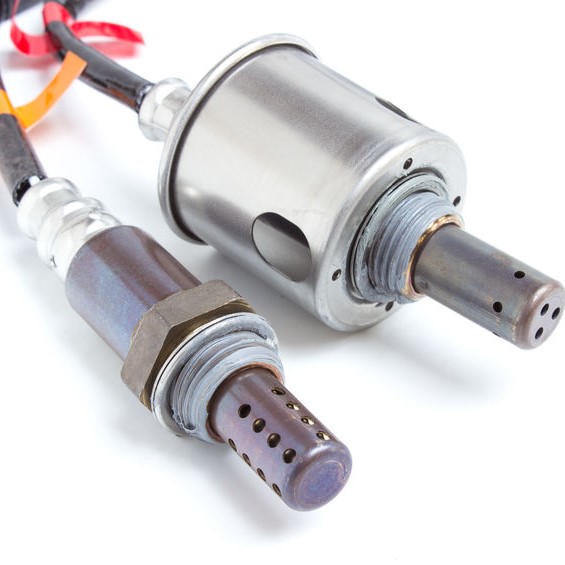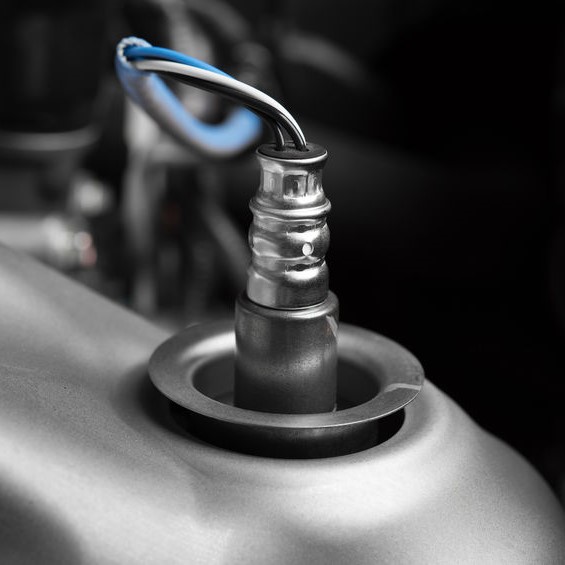
So, what is the function of oxygen sensor?
Your vehicle requires gasoline to operate and run along with oxygen. The oxygen creates a spark that ignites the engine and burns the gasoline. That creates the fuel needed for your car to run. That oxygen has to be rationed though, and that is done with an oxygen sensor.
The oxygen sensor is usually found mounted in the exhaust system so that it can measure the amount of oxygen in the exhaust gases. The sensor compares the amount of oxygen to the proportion of oxygen in the air, then updates the computer in your vehicle with that information.
The vehicle’s computer is called an ECU (Engine Control Module) and when the oxygen sensor is functioning correctly. This helps a vehicle in passing any state mandated emission testing as well as the fuel efficiency.
How long do oxygen sensors last?
The oxygen sensor is exposed to extreme high temperatures any time the vehicle’s engine is running, even if you’re sitting at a light with the engine idling. That heat can wear the oxygen sensor down each time the engine is running.
What happens when an oxygen sensor goes bad?
If the oxygen sensor fails, there are several issues and problem you can experience, starting with a rough running engine. Another main issue you will have is when you take your vehicle in for state inspection, it will not pass the emission testing with a bad oxygen sensor. The oxygen sensor is important to a vehicle’s operation, and when you notice the following situations, you should take your vehicle to a mechanic to be checked:
- The Check Engine light comes on and stays on
- The engine has a rough idle
- The engine sputters when you let off the gas
- The gas mileage gets worse
- The engine loses power and becomes sluggish
What causes an oxygen sensor to fail?
An oxygen sensor, also referred to a O2 sensor, can fail because of various contaminants entering the exhaust. These contaminants can include silicates from coolant leaking from the internal engine and phosphorus from extreme oil consumption. In other words, your vehicle needs mechanical attention as soon as possible. If your vehicle’s oxygen sensor has failed because of these reasons, there are internal issues with the engine.
How long can you drive with a bad oxygen sensor?
The oxygen sensor in your vehicle helps the exhaust system reduce the harmful fumes it emits when the engine is running. Your vehicle can be driven for any amount of time with a malfunctioning oxygen sensor, but it won’t be able to monitor the amount of air and fuel mixture it uses and make the automatic adjustments. So, in quick summary, yes, you can drive a vehicle with a bad oxygen sensor, but you’ll be spending more money on gasoline and you’ll risk other damage possibly happening.
What happens if you don’t replace oxygen sensor?
The first thing that happens with a failed oxygen senor , it isn’t doing its job of monitoring the amount of air and fuel mixing, resulting in a loss of fuel economy and higher emissions. The next thing that can result from not replacing a failed oxygen sensor is your vehicle won’t pass state emission testing. The last, but just as important, the catalytic converter will overheat, and other components of the engine can be damaged. .
Can oxygen sensor be cleaned?
This can depend on who you ask. There are oxygen sensor cleaners on the market claiming to be safe for the oxygen sensor and engine. Other people have used an aerosol cleaner and wire brush, but most mechanics recommend having the oxygen sensor change for the safest results.

How long does it take a new O2 sensor to work?
When an oxygen sensor has been replaced, it needs to be reset in order to properly monitor the air and fuel information. If you have a mechanic install your oxygen sensor, they will reset and test it. If you do your own replacement, the following steps will reset the sensor:
- Step One: Open the fuse panel and locate the ECU fuse and pull it out.
- Step Two: Turn the ignition “On” without cranking the engine.
- Step Three: Wait 5 minutes then reinsert the ECU fuse. The “Check Engine” light should blink and turn off, indicating the ECU is reset and your vehicle is ready to go again.
Now you know more about your vehicle’s oxygen sensor, but did you know there is more than just one type? What are the different types of oxygen sensor? Well, there are 4 that we’ll list here, but not all of them are related to vehicles!
- Electrochemical Oxygen Sensor: used to measure oxygen levels in ambient air.
- Zirconia Oxygen Sensor: senses the variance between the concentration of exhaust gas and O2 in normal air.
- Optical Oxygen Sensor: using the principle of fluorescence quenching, this sensor uses a light detector and a luminescent material that reacts to light.
- Infrared Oxygen Sensor: used in the medical industry to measure the body’s oxygen saturation.
Need an oxygen sensor service in Mission Viejo, CA? Japanese Car Specialties is always available to assist you. Call 949-583-0811 today.